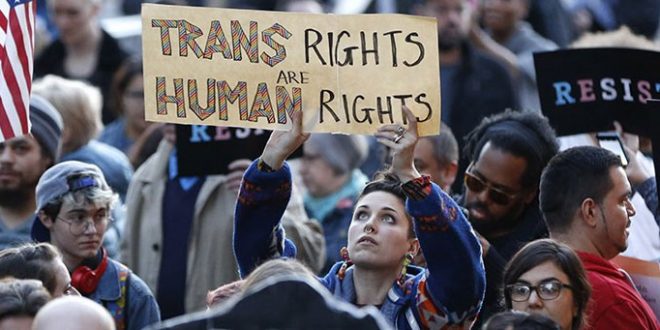The authors are in the employment department at Bates Wells & Braithwaite. Copyright 2001 Times Newspapers Ltd. 30th January 2001
Employers are disturbingly ignorant of sex change issues, say . With 5,000 transsexuals in Britain, issues about gender reassignment are arising within the workplace with increasing regularity. Several employers have sought advice from us in the past year about the treatment of employees undergoing gender reassignment. Although few cases about transsexuals have been reported, it is clear from the output of the Equal Opportunities Commission that many cases are being brought, and often settled. But there appears to be a disturbing ignorance among employers about the legal protection of transsexuals and good equal opportunities practice.
In 1996 the European Court of Justice held, in the case of P v S and Cornwall County Council, that the dismissal of an employee because she was starting gender reassignment was unfair and contrary to the European Equal Treatment Directive. As a result, the Sex Discrimination (Gender Reassignment) Regulations 1999 were brought into force. They amended the Sex Discrimination Act 1975 to extend protection in employment and vocational training to anyone who ‘intends to undergo, is undergoing or has undergone gender reassignment’.
Gender reassignment is defined as ‘a process undertaken under medical supervision for the purpose of reassigning a person_s sex by changing physiological or other characteristics of sex and includes any part of such a process’. There is no definition of ‘intends’ within the regulations but clearly more than cross-dressing is envisaged (although individual freedom of expression by way of dress is now to some extent protected by the Human Rights Act 1998). The category of individuals protected is wide, with no differentiation between pre and post-operative transsexuals.
Less favourable treatment of a transsexual is permissible in limited circumstances: where the job requires performance of intimate physical searches or doing work or living in a private home where objection may reasonably be taken by the individual to this degree of intimacy and contact. These genuine occupational qualifications are applicable at all stages of the gender reassignment process.
There are two further exceptional circumstances: where it is necessary for the employee to live in shared accommodation, or where personal services are being provided to vulnerable individuals ‘and in the reasonable view of the employer those services cannot be effectively provided by a person whilst that person is undergoing gender reassignment’. However, these two genuine occupational qualifications do not apply to individuals who have undergone gender reassignment.
There is thus, evidently, potential for difficulty with, for example, a care worker who has completed the process of changing but by whom an elderly client does not wish to be cared because the client is aware of the transsexuality. A refusal to provide work would amount to discrimination. Employers and prospective employers should bear in mind that tribunals are able to draw the inference of discrimination from the very fact of less favourable treatment.
It is often practical issues that cause difficulties at work. In particular, there is the question of which lavatory a transsexual should use. The answer is straightforward: whichever he or she prefers to use. If this preference causes embarrassment among staff, the employer must attempt to inculcate a more enlightened attitude. A last resort may be to agree with the transsexual that a lavatory be designated as unisex (this should preferably not be the same as the disabled facility).
This course of action was approved by an employment tribunal in the 1999 case of Bourne v Roberts & the Post Office. Equally, employers are often concerned about when other employees should be informed about a change of gender. All that is required is agreement on a timescale and to be flexible. Again, it should be borne in mind that the legislation encompasses the whole process from the stage of intention onwards. Personnel records should be updated at an appropriate point, and any references to previous gender removed (save if required for specific and legitimate purposes, such as insurance or pension records). It is an anomaly at present that transsexuals are unable to alter their birth certificates to reflect a change in sex.
The regulations do not address the question of discrimination in areas other than employment, such as education and access to goods, facilities and services. However, it is recognised that domestic legislation is inadequate and is likely to be expanded. Last May a case brought by a transsexual, Lisa Jones, against a landlord who asked her to stay away from his pub in Honley, near Huddersfield, settled for £1,000 compensation plus a £600 contribution towards costs. We can expect more such cases in future.
By Lucy McLynn and William Garnett
Gender Trust – 2003, This information sheet is distributed by the Gender Trust and is intended as a basis for information only. The Gender Trust does not accept responsibility for the accuracy of any information contained in this sheet.
 Lesbian, Gay, Bisexual, Transgender & Intersex News Lesbian News, Gay News, Bisexual News, Transgender News, Intersex News, LGBTI News
Lesbian, Gay, Bisexual, Transgender & Intersex News Lesbian News, Gay News, Bisexual News, Transgender News, Intersex News, LGBTI News




